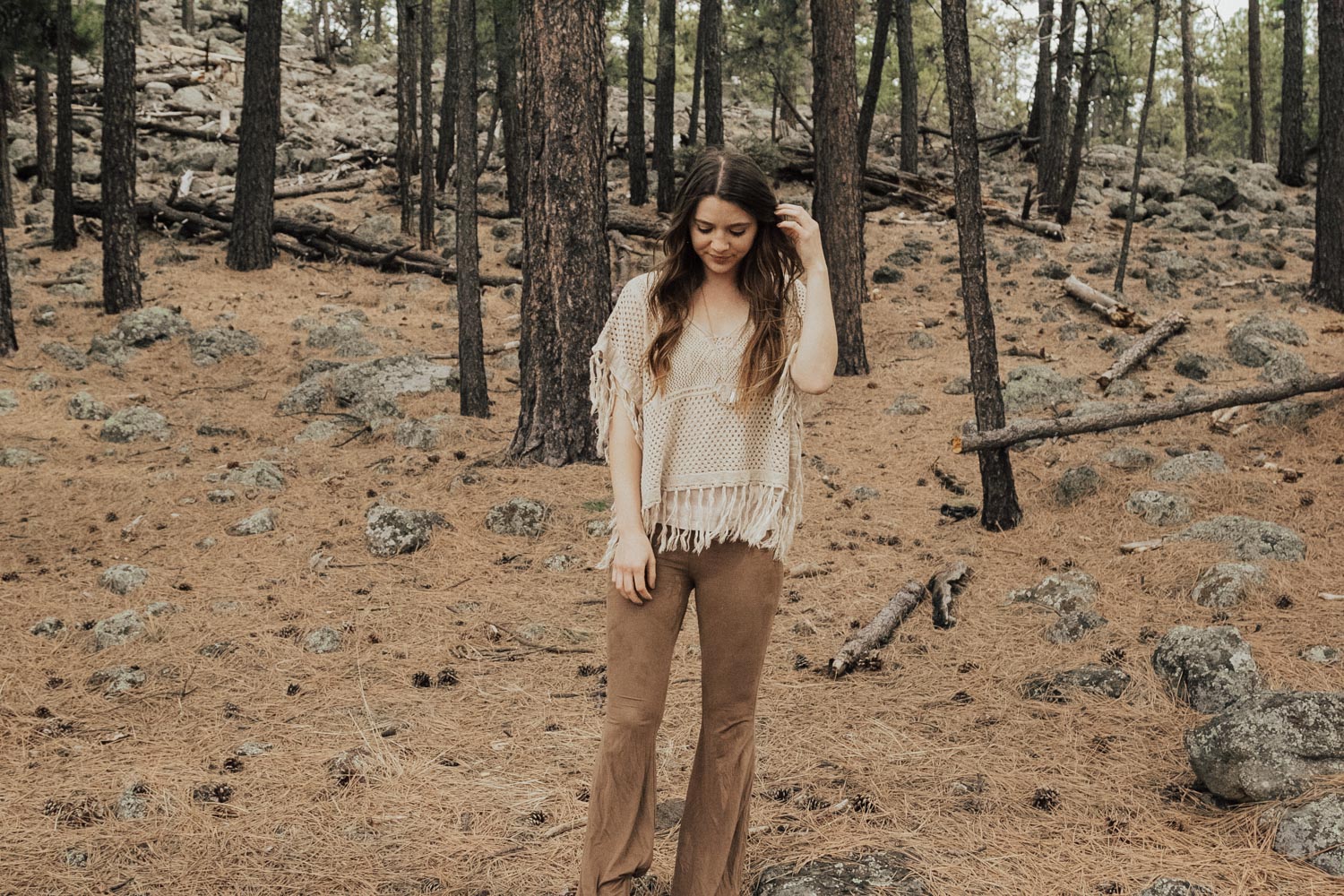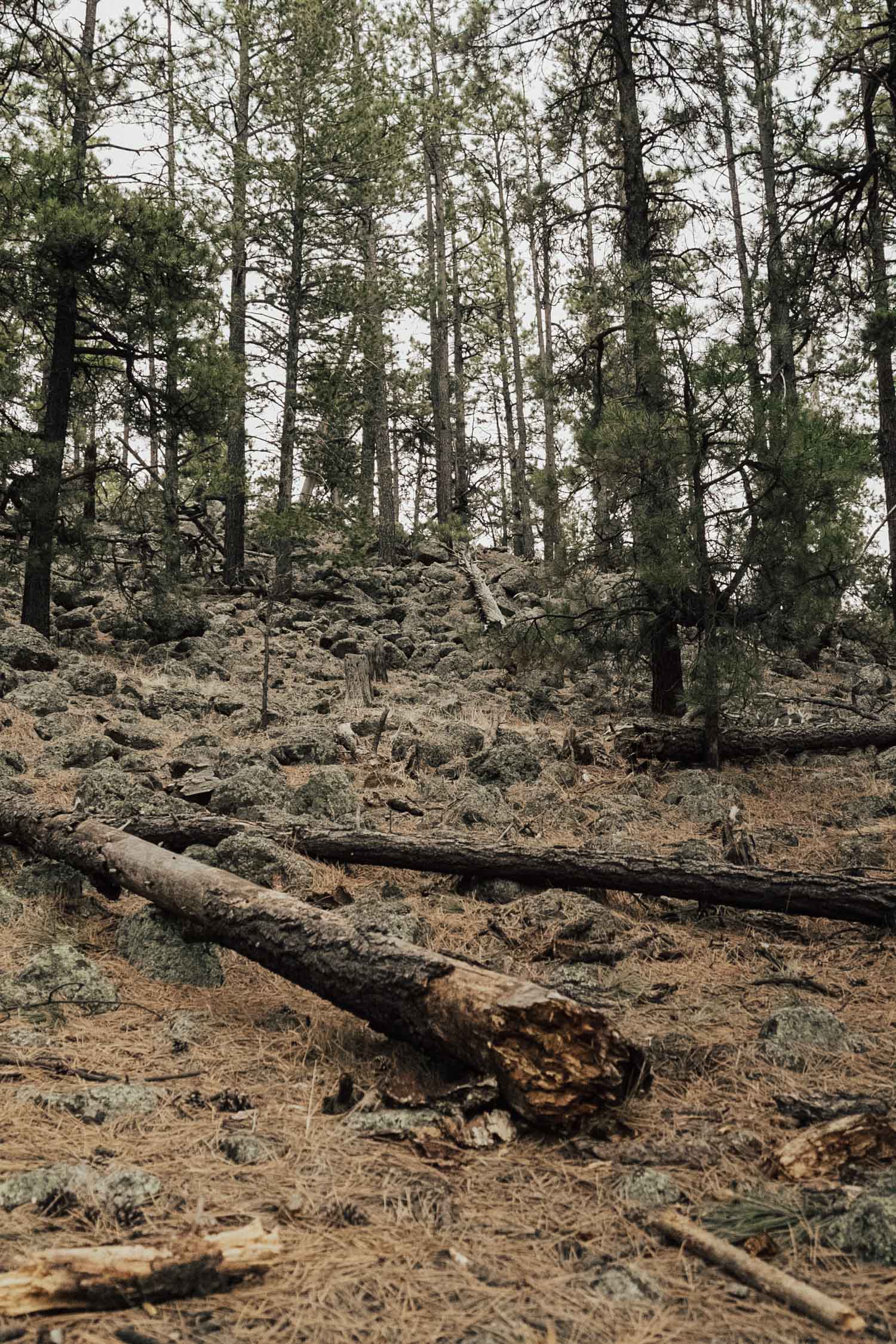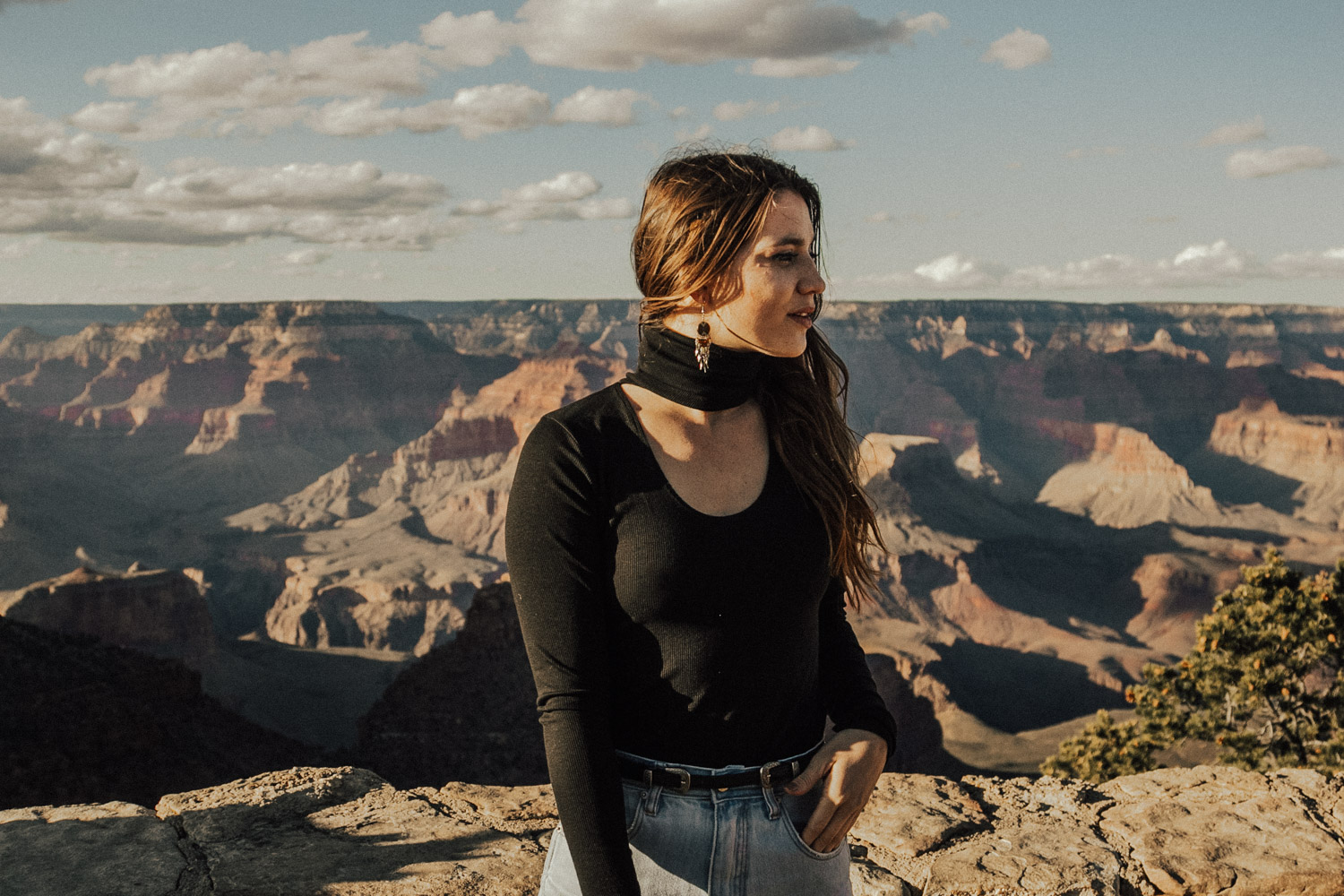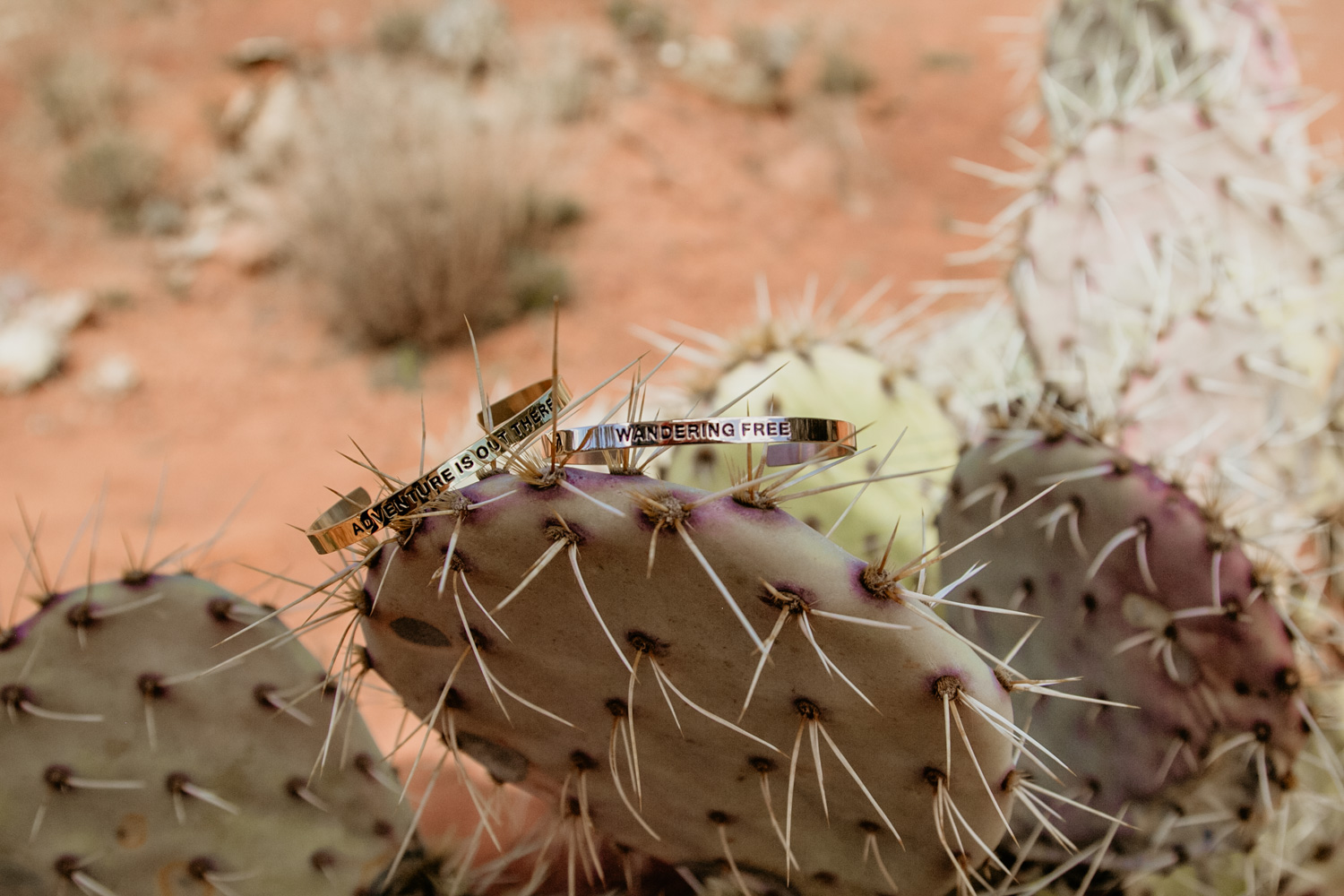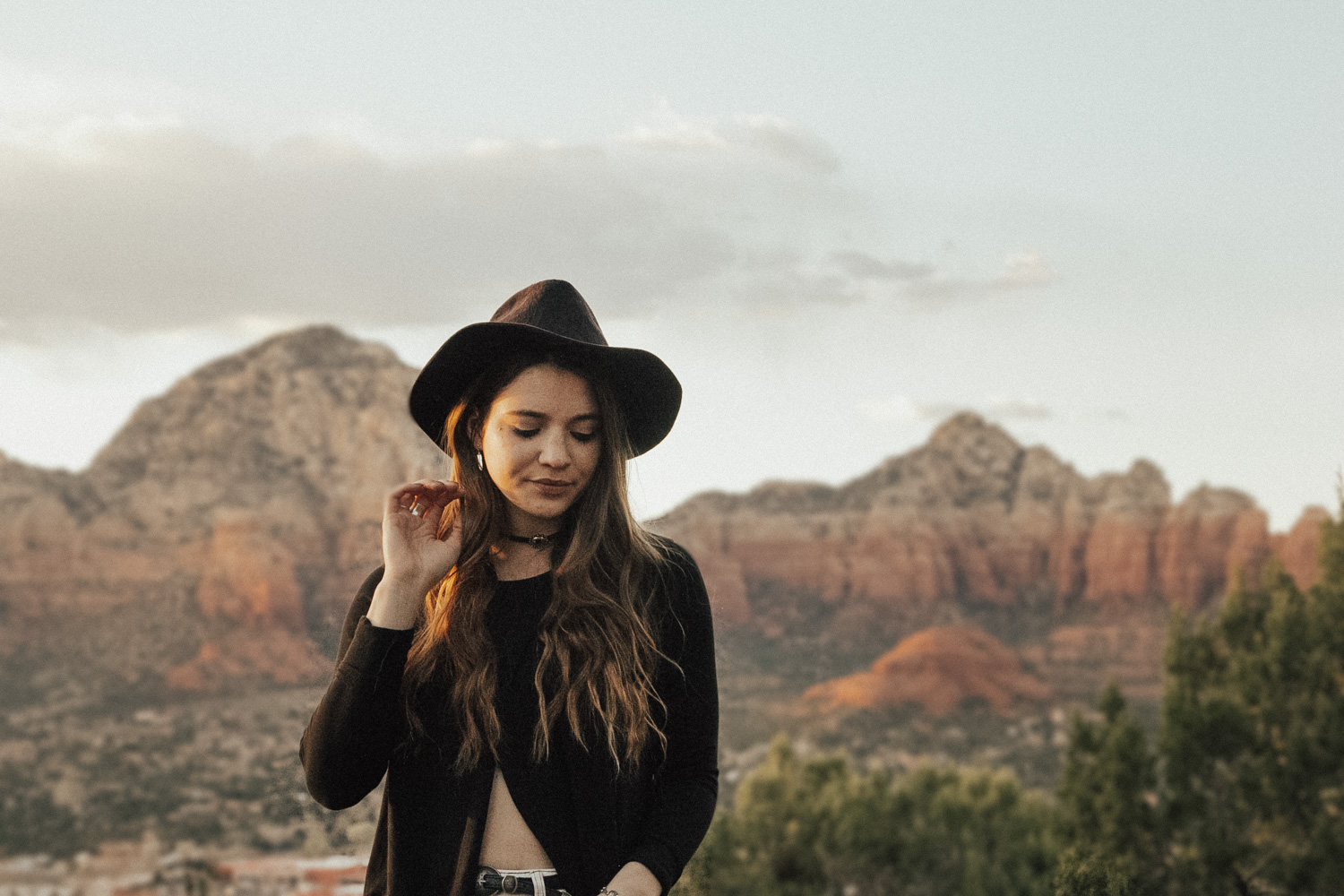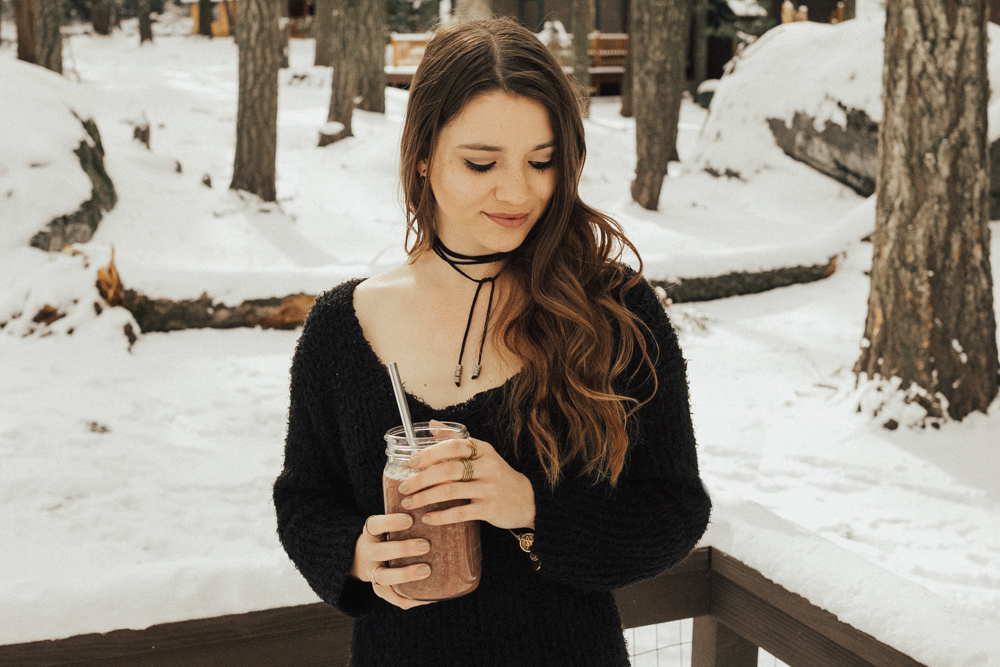I recently had the pleasure of working with Sundays Designs (formerly Vegan Resortwear). Their founder, Edina, is so sweet and very dedicated to sustainable fashion and vegan living. Check out the interview I did with her below!
Pieces I’m wearing: Hermosa Linen Tie-Back Top Navy and Hermosa Linen Lounge Pants Oatmeal
Sundays Designs: Allison, would you please introduce yourself and tell us a little bit about you and your lifestyle?
Me: Hi! I’m from Scottsdale, AZ and currently live in Long Beach, CA. I’m a freelance graphic designer, photographer, stylist, and creative director. It’s awesome being my own boss! I also have an eco/vegan fashion, lifestyle, photography, and travel blog.
Sundays Designs: You had been vegetarian for quite long time but later became a vegan. What’s your advice to those who have hard time starting Veganism or to those who are still transitioning and feeling stuck?
Me: To be honest, going vegan was the best thing I could have done for my health, the health of others, the environment and for animals in my lifetime. It’s such an extraordinary thing that you can heal your body from the inside out with plants and live a lifestyle of loving other sentient beings and our planet – and the food is amazing! When I see something non-vegan that looks and smells delicious, for example pizza, mac & cheese, or a cupcake, I just think to myself, “I don’t need this now, I can be patient to find a vegan version of this later.” It’s not about limiting your taste buds; it’s about finding alternatives that are better for you, others, the planet, and animals.
If you need any inspo for going vegan, there is an abundance of environmental and vegan Instagram accounts, and documentaries on the Internet that I swear by. I keep a list on my phone in case someone asks me for vegan inspiration because they are thinking about becoming one.
Documentaries: Forks Over Knives, Earthlings, Cowspiracy, “The Best Speech You’ll Ever Hear” – Gary Y on YouTube, Food Choices, Vegucated, Live and Let Live, Simply Raw, Fat Sick and Nearly Dead, Food Inc, Food Matters, Hungry For Change, Hell For Leather, 101 Reasons to Go Vegan, What the Health, etc.
Instagramers: @nutrition_facts_org, @sobeautifullyreal, @naturally.jo, @mindfuldiabeticrobby, @minimalistbaker, @nourishtheday, @bestofvegan, @vegancuts, @ehvegan, @365cleaneats, @yvonnesvegankitchen, @veganfoodpoint, @eatcleanwithsarah, @natalyahardan, @bionic_vegan, @avantgardevegan, @rainbowplantlife, @vegancommunity, @choosingchia, @loveandlemons, @theveganfiesta, @breezybalance, @lonijane, @panaceas_pantry, @veganfoodspot, @losvegangeles and @veganfatkid (if you’re in LA), @fullyrawkristina, @veganricha, @elsas_wholesomelife, @veganpregnancyandparenting (not now, but I still follow them for future knowledge haha), @vegan, @donutfriend, @cinnaholic, @eatdrinkvegan, @third_eye_vegan, @domzthompson, @veganwelcome, @crossroadskitchen, @vegetaryn, @plantpurenation, @ved_md, @veganflexzone, @farmsanctuary, @vegansofig, @ellenfisher, etc. etc.
The reason people fail at being a vegan and end up going back to meat is often times because they lack creativity and motivation. Learning how to cook and learning how to cook vegan are both a challenge for some people and it can get boring and restrictive if you don’t intentionally seek out new things to make or have a 20-25 go-to meal ideas. If you have amazing vegan options at restaurants in your city – awesome! If not, cooking yourself will be even more essential. There are a lot of social, cultural, and environmental pressures that keep people “off track”, or “stuck in a rut”...it’s hard to change to vegan if you don’t live near many vegan options, or have family members who may be teasing you for your choices, but don’t forget; you have the resources and a massive vegan community that can help you!
My mother has her RN, MBA, and just finished her PhD in Nursing and Healthcare Innovation and is starting a company called WellOptima, that is especially, specifically designed for helping people who are “stuck” in changing their behavior—the whole point is to help people make changes in their health and wellness that they can “maintain”. She quickly turned vegan after I did, is an encyclopedia of knowledge on this topic and can assist in plant-based living and wellness motivation if you or someone you know could use it.
Sundays Designs: We know how much you love to cook! Do you have any good vegan recipe book recommendations?
Me: I’m much more of a “buy it and look at the pretty pictures for inspo” type of recipe book buyer than one who actually follows recipes to a tee. Thug Kitchen is wildly entertaining and sassy in the verbiage and the food looks amazing. I also like Beautifully Real Food by one of my fave Instagram gals @sobeautifullyreal. Everything is actually so beautiful and I wish I could fly to Australia just to try some of her goodies she sells at a local shop there.
Sundays Designs: Do you have a favorite recipe that you can share with us?
Me: Oh my goodness where do I start?! There are so many recipes I love but I don’t follow a lot of things precisely. I more have a general idea of what I want to make or look in the fridge for what ingredients need to be eaten first. We don’t like to have food go bad before we eat it! One particular one I love for the holidays coming up is raspberry cobbler. FAIR WARNING – this isn’t “healthy vegan”; this is “naughty vegan”. My mom would always make it for Thanksgiving growing up and since I, and then my family transitioned to vegans and mostly-vegans we altered the recipe so it’s vegan as well. Side note, my mom and I hope to make a cookbook together some day where we can include our favorites! This recipe is super simple and I’m going off of memory.
Vegan Raspberry Cobbler
Ingredients:
½ cup organic vegan margarine (melted)
½ cup organic sugar (for crumble)
1 cup organic all purpose flour
2 tbsp organic sugar (for raspberries)
3 cups organic fresh raspberries
Directions:
1. Preheat oven to 350 degrees.
2. Combine melted margarine, sugar, and flour into a mixing bowl until it’s a soft but crumbly dough. If it needs to be more crumbly, add more flour. If it needs to be softer, add more margarine.
3. Take ½ of dough and press it into a lightly greased pan to create a thin crust – about the height of four pennies stacked. Bake in oven for 5-8 minutes while you wash and prep the berries.
4. Mix the sugar and fresh, washed raspberries in a bowl.
5. Take out crust from oven and spread raspberry mixture on top. Take the remaining ½ of the crumble dough and disperse evenly on top. Place in the oven for 35-45 minutes or until top is golden brown.
6. Top off with some vanilla vegan ice cream or eat as is! Enjoy!
Sundays Designs: We think a vegan lifestyle should go hand in hand with living a sustainable lifestyle. When did you become more conscious about this lifestyle, and what inspired you?
Me: I always said I would never be vegetarian, and then I turned 15 and my brother and his friends were blowing up little guppies and tiny critters in the backyard with explosive because boy teenagers (queue the eye roll) and I said on a whim that after that night I wanted to be a vegetarian because of animal cruelty. They all mocked me and said I’d never last. So at first I did it to show them that I could, and then I really became to love it and learned more about it.
Then college happened and I had a random vegan roommate for a summer my junior year. I never wanted to go vegan because I loved cheese, sweets, and all my designer purses/shoes too much. I loved fashion and luxurious things. I wanted to be comfortably unaware; I knew if I saw the documentaries I wouldn’t be able to look back. Whelp, you guessed it… I watched the documentaries and she turned me real quick – only took about a month for me to go vegan haha.
At first, I only ate vegan and still wore my leather/suede shoes and bags even though I kinda felt guilty. It wasn’t until the summer after college when I was moving to Long Beach where I realized I had to cut down my wardrobe by at least 1/3rd. This meant I had to get rid of all the animal products. Almost everyday that summer I would go to work and come home and list my non-vegan pieces on Poshmark or eBay as well as clothing that wasn’t my style or didn’t fit anymore. It was a lot of work and I was actually very sad about letting some things go but it was much needed. I had a shopping addiction since I was in high school and certain pieces made me feel so good. It was difficult but after that transition it got a lot easier.
From there I started learning more about sustainable, ethical, and vegan fashion and fell in love with fashion all over again. But this time, it was different. It was about being a conscious consumer with everything - what’s on your plate, what you wear, and the products you buy and use. Now, I use every chance I get to educate friends, family, and strangers on the affects our purchases have on the planet and most of them are in complete disbelief. I also have become an avid compost scrap collector, recycler, and bring my own containers and utensils everywhere. I’m not zero waste, but I definitely try to do low-waste living as best I can. I feel like a whole new person than I was three or four years ago.
Sundays Designs: What are the most important aspects to you regarding ethical and sustainable brands?
Me:
1. Has to be vegan - obviously
2. Sustainable materials - linen, modal, tencel, organic cotton, recycled cotton, eucalyptus, hemp, bamboo, etc.
3. Sustainable production - methods that enhance sustainability like less water, less waste, zero waste, eco friendly factory, safe/natural dyes, etc.
4. Ethical production - workers treated fairly, fair-trade, no sweatshops, etc.
5. Country of origin - Generally, the USA, Europe, Australia, and Canada have better and safer regulations for workers than Asia, Africa, and Central/South America. However, it depends on the factory – I’ve heard of some in Mexico and India, for example, that are higher quality and more sustainable and ethical than alternative factories in the USA.
6. Charitable and give to philanthropic causes - Love this one! Bonus if the charity is sustainability, vegan, animal welfare, or environment related.
7. Transparency - I love to see photos of factories, workers, etc.
Sundays Designs: What’s your fashion look?
Me: My fashion look is mostly bohemian, and mixed with romantic, edgy, and vintage/retro.
Sundays Designs: What’s your opinion on “sustainable” leather, silk and wool products? Could these be ever sustainable?
Me: This is a highly debated topic and everyone is open to their own opinion, but for me, I do not find these materials sustainable or ethical. The only argument you can make for “sustainable leather” is if you bought something secondhand at a thrift or consignment store, but even then it doesn’t check off the “ethical” box for me because I’d be walking around with a dead animal on my feet. Saying leather is a “bi-product” of the meat industry and that using it is sustainable because it’s not going to waste is just naïve; leather on its own is a huge industry and billions of animals are slaughtered for it, not just cows.
Although I no longer purchase wool or silk, I’m much more lenient on these than I am with leather products. I think out of my whole closet I may still have a couple silk or wool-based pieces but I’m in the process of weeding those out and selling them. Harvesting wool is often unethical as wool farmers often gash, cut, and harm the animals in the process of cutting their wool from their bodies but the process itself doesn’t kill the animal. There are some “ethical” wool harvesters that boast about how well they treat their sheep, but it’s still not our wool to take even though it’s a much more natural fiber than the typical plastic-based wool alternative, acrylic. As for silk, this is a more natural fiber as well compared to the plastic-based polyester. The process of harvesting the silk kills so many worms. To be honest, I really don’t like bugs and the process kind of grosses me out just thinking of larvae and their cocoons. Basically, leather kills the animal, wool harms the animal, and silk kills most of the worms but I don’t consider them to have the morality or consciousness that a cow, pig, sheep, etc. would have.
Sundays Designs: As a photographer who loves to travel, what’s your favorite location you have been so far, and what’s on your bucket list?
Me: My list is never-ending! It’s too hard to pick one, but some of my favorite places I’ve been to are Morocco, Belize, Thailand, Laos, Australia, Chile, Argentina, Guatemala, Italy, Alaska, Israel, and Spain. My top three places on my bucket list right now are Bali, Costa Rica, and Iceland.
Sundays Designs: Do you prefer AirBnb or eco-resorts?
Me: I’ve only stayed in one true eco-resort and it was the vegan Stanford Inn in Mendocino, CA. Cha Creek in Belize was very eco-friendly as well and a beautiful hidden gem in the jungle. They were amazing but I do love the flexibility of Airbnbs. It honestly depends on if I’m on a trip with my family or if I’m with friends. Family – eco resort 100% (also, mom and dad are paying). Friends – Airbnb 100% because it normally ends up being cheaper, we have more space, and you have way more freedom.
Sundays Designs: What changes do you want to see in the fashion world in the future?
Me: I’d love to see more vegan, sustainable, and ethical options popping up! I want to see more designers and brand seeking alternatives. The information, resources, and materials are out there; I think there just needs to be more effort put in by consumers. The more consumers demand, the more shift we’ll be able to make!
I also really struggle to find trendy vegan wide brim hats, so if there’s someone out there reading this that has been thinking about doing this, PLEASE DO. So many of them have wool, leather, and suede on them and it’s pretty disappointing. I get most of mine off of Poshmark but settle for the cheaper made ones because they are “vegan”. Most other fashion pieces I can find cute and vegan though.
In addition, shout out to Stella McCartney for basically being the only luxury vegan brand. I think if more big designers and brands followed her example, people would think going vegan would be a whole lot easier. People are all about convenience, if it’s convenient to buy vegan at any price without scarifying quality or trend why wouldn’t you?















